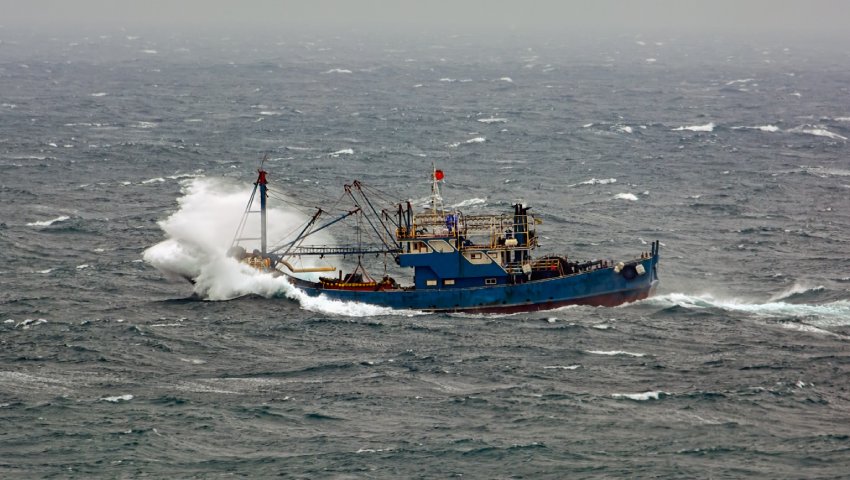The role of commercial fishing vessels in disrupting military activities is not new. However, the democratisation of military technology has enabled civilians and clandestine military operators to play an expanding role in the modern hybrid maritime battlespace.
To continue reading the rest of this article, please log in.
Create free account to get unlimited news articles and more!
Last week a group of Irish fishermen planned to disrupt a Russian naval exercise off of the nation’s coast, prompting a war of words between Russia’s ambassador to Ireland and Ireland’s leading fishing industry bodies. While fisherman expressed their concern about the impact on fishing arising from a large naval presence in the region, the Russian government responded that the planned protest was part of European propaganda efforts.
The role of commercial vessels in disrupting military activities is not new. However, the democratisation of military technology and the growing role of media in the psychological sphere has made this military-civilian symbiosis a significant tool in the modern hybrid battlespace.
In some examples, small and disparate naval fleets can even overwhelm advanced conventional capabilities.
In 2002, a US war game simulating naval operations in the Strait of Hormuz sent shockwaves through the country’s military establishment. The trial, at a cost of $250 million, sought to evaluate the capacity for American warships to operate and overcome large units of small Iranian patrol boats.
At the end of the war game, the US was thought to have lost some 16 warships with a decisive Red Team (a notionally Iranian OPFOR) victory.
“The sheer numbers involved overloaded their ability, both mentally and electronically, to handle the attack,” the Red Team Commander Lieutenant General Paul Riper told The New York Times several years later. “The whole thing was over in five, maybe 10 minutes.”
Recently, the Chinese government has sought to utilise the country’s commercial fishermen to reinforce the People’s Liberation Army Navy (PLAN) to undertake grey zone and hybrid operations both in the Indo-Pacific and beyond.
According to PhD candidates Shuxian Luo and Jonathan Panter in the United States’ Army University research journal, “maritime militias” have been co-opted by the PLAN to help “China rewrite the rules of freedom of navigation, buttress its maritime claims, secure vital resources, and extend its economic reach across the globe”, while inhibiting the US Navy’s operational capabilities and undertaking military operations that fall below the legal threshold of an armed attack.
The pair explain that the application is not simply part of an unregulated or clandestine military operation, rather the integration of fishing vessels into China’s military apparatus has been a doctrinal naval priority for decades.
“In its defence white paper from the year 2000, China for the first time described its frontier defence as a ‘joint military-civilian land and sea border management system, headed by the military and with a sharing of responsibilities between the military and the civilian authorities’,” the pair note.
“The maritime militia, a separate organisation from both the PLAN and China Coast Guard (CCG), consists of citizens working in the marine economy who receive training from the PLA and CCG to perform tasks including but not limited to border patrol, surveillance and reconnaissance, maritime transportation, search and rescue, and auxiliary tasks in support of naval operations in wartime.”
As such, with labour and time intensive taskings undertaken by a “maritime militia”, the PLAN can free their resources and direct them toward more pressing operational tasks.
This extension of China’s military footprint has resulted in substantial intelligence, surveillance and reconnaissance capabilities the world over, and enabled greater maritime competitive control in the Indo-Pacific.
“The militia has played a major role in asserting Chinese maritime claims in the South China Sea. This includes high-profile coercive incidents such as the 2009 harassment of USNS Impeccable, the 2012 Scarborough Shoal standoff, and the 2014 HD-981 clash,” the pair note.
Further, the “maritime militia” has been utilised to support trade and diplomatic missions throughout the developing world. Luo and Panter explain that there is an intricate link between China’s commercial fishing activities in the developing world and deepening economic and diplomatic relationships via the Belt and Road Initiative under the government’s “going out” strategy, where fishermen identify “new markets, resource accesses, and investments around the world”.
Nevertheless, the quasi-military applications of the commercial vessels require complex military and civilian responses from the international community. It is legally unclear just at what point such vessels cross the threshold into armed conflict, despite their role in generating ISR and resource coercion.
US Army Colonel Tom Hanson PhD in ASPI’s The Strategist in 2016 argued that the Chinese fisherman were analogous to Russia’s little green men in Ukraine. However, unlike the overtly covert operations of the little green men, China’s fishermen have been intentionally provocative to China’s neighbours in the South China Sea.
“It also puts China’s neighbours on notice that they shouldn’t expect China to adhere to international agreements if Beijing determines that its interests aren’t served by doing so,” COL Hanson elaborated.
Your say
Whether collecting military ISR or coercively controlling critical resources, China’s commercial fleet will be used to further the reach of the Chinese Communist Party for years to come. How can Australia best respond to this growing threat?
As always, please let us know your thoughts in the comments below.
Get involved with the discussion and let us know your thoughts on Australia’s future role and position in the Indo-Pacific region and what you would like to see from Australia's political leaders in terms of partisan and bipartisan agenda setting in the comments section below, or get in touch with

 Login
Login







